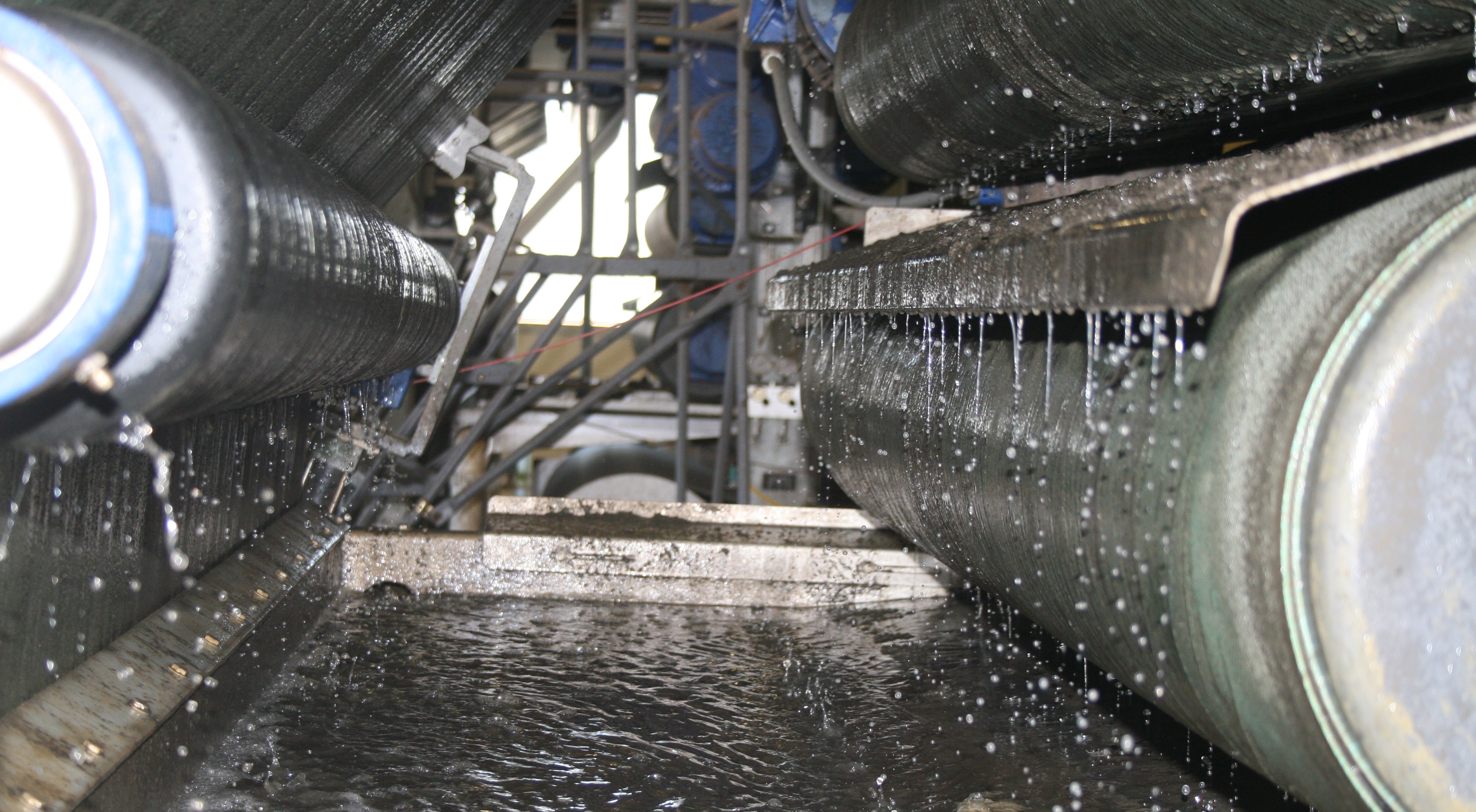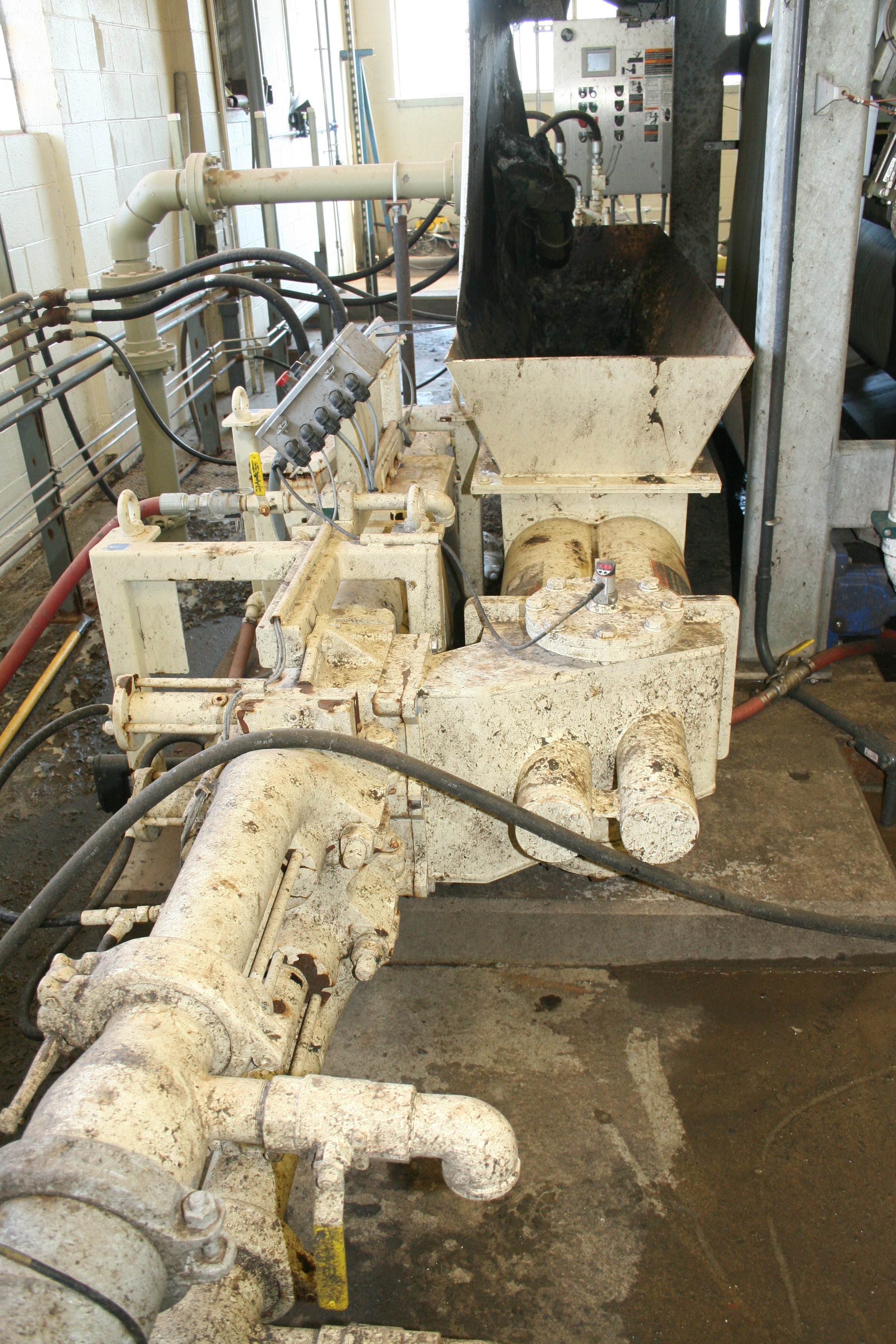Schwing Bioset Application Report 15, Glens Falls, NY
Written by Larry Trojak, Trojak Communications
Version also published in TPO Magazine, August 2013

While most wastewater treatment plants focus their efforts solely on the material collected from within their own municipality, some choose-often for economic reasons-to supplement that volume with outside waste. After a major expansion in the late 1980s, and an upgrade in the mid-1990s, the city of Glens Falls (NY) Wastewater Treatment Plant found itself in just such a situation and opened up its facility to non-system waste. Today, drawing from a wide range of sources, the plant accepts an equally broad range of materials including: grease trap waste, sanitary holding tank waste, septage, sewer cleaning debris and wastewater sludge-both liquid and cake-from off-site facilities. That product diversity, coupled with impressive long-term equipment performance, has helped the plant remain viable in serving the upstate New York city and surrounding areas.
Legacy Lives On
Located on the Hudson River about 45 minutes north of Albany, Glens Falls is a picturesque small city, home to just under 15,000 residents, and a thriving base for the medical device and medical services industries. The city was also the site of a huge pigment manufacturing facility that was shut down in the 1980s, but left a legacy of contaminated soil in its wake. Today, nearly three decades after its closing, wastewater from the site’s groundwater treatment and collection system is still being processed at the Glens Falls WWTP, according to Jason Vilander, the plant’s maintenance manager.
“That pigment plant was actually a driving force in an expansion that took place here in the mid-‘80s,” he said. “A lot of water is used in chemical and dye work—water that couldn’t simply be discharged to the river—so the plant was designed to accommodate that additional wastewater volume. That expansion allowed us to move to activated sludge treatment and prompted installation of a fluid bed incinerator. Unfortunately for us, the pigment plant shut down during the latter part of our expansion, leaving us with a good deal of extra capacity.”
Since that time, Glens Falls WWTP has had an ongoing contract to accept and treat water from the groundwater collection system from the pigment plant site.
Filling the Void
Needing to fill the excess capacity left by the pigment plant’s untimely closing, Glens Falls WWTP began to actively seek companies or organizations looking to outsource their wastewater and waste product treatment needs. To say those efforts were a success would be an understatement. Today, the plant serves a fairly localized geographic area, taking in material from the town of Queensbury (six of its seven districts), as well as the Village of South Glens Falls, including the business centerpiece, Moreau Industrial Park.
But, because they were aggressive in reaching out to businesses throughout the region, they now also count many of them as customers.
“We’ve had success in some unlikely places,” says, Vilander. “Most of our liquid sludge, for example, comes out of Vermont. That includes some of the larger ski resorts as well as many of the treatment plants from other towns and villages—plants that don’t have drying beds or digesters or any other means to take product through the final steps needed for it to be safe for disposal. So we provide that last step for them.”
Volumes are also supplemented by outside cake haulers, including regional correctional facilities such as Comstock Prison and the Washington County (VT) jail.
“These facilities all have their own wastewater treatment systems, complete with belt presses, which allows them to generate a cake. But that’s as far as they can go with it. So, twice or three times a week, they send us five tons of cake in a single-axle dump truck, and dump it onto a pad. We then use a pay loader to load that cake into a receiving station where it is stored until we have the time and manpower to incinerate it,” he adds.
Three Decades of Sludge
The benefits gained by reaching out for additional material would be a moot point were Glens Falls unable to effectively incinerate what it collects. Vilander says the equipment in place in many parts of the facility has amazed him in both its capability and its longevity.
“A good case in point would be our sludge pumps,” he says. “We had a pair of Schwing KSP-5 sludge pumps that were installed during that first plant upgrade in the 1980s. Those pumps—which were among the first made by Schwing for this market—have been outstanding for us, given what they’re asked to do. They were replaced just a couple years ago after nearly three decades of pumping. And mind you, they were replaced not because of wear issues, but because our volumes had grown so much over the years that we needed to upsize.”
He adds that the pumps’ impressive performance is made even more so given the fact that one of the critical steps in their routine maintenance was often overlooked for being “too inconvenient.”
“I’ve always felt that keeping the water in a pump’s water box clean is second only to keeping the hydraulic fluid clean,” he says. “Unfortunately for us, in the prior expansion, a grate, which allowed personnel to walk around the belt presses, was installed right over the top of the pumps’ water boxes, making access difficult. As a result, the water was changed far too infrequently. I’m still amazed at how well those pumps worked—and how long they performed for us—even with that lapse in an important operating procedure.”
With This Ring

With the upsizing to a larger pair of sludge pumps (Schwing KSP-10s), Glens Falls has increased their pumping capability to deal with the growth in biosolids handling at the plant. The new pumps take cake that has been dewatered to about 24%-26% solids and route it for incineration where a 32-ton load of cake (an 18-wheeler full) can be reduced to 100 pounds of ash. Moving that high solids content says Vilander, is helped by the addition of a “slip ring,” or pipeline lubrication system, a feature that injects a thin film of water to reduce friction loss in the pipeline and lower pipeline operating pressures—in some cases by more than 50%.
“We work so hard to get all the water out, so it seems a bit contradictory to be putting some back in,” he says. “But, because we’re running these slip rings at about 20-30% of their capacity and they come on for only a matter of seconds, we are adding no more than three gallons per hour. So the amount of water added is minimal and pales by comparison to the improvement in throughput and the fuel savings we achieve with the drier sludge cake,” stated Vilander.
Additional benefits provided by the newer pumps include a much greater degree of versatility. Because the pumps are PLC-controlled, Vilander and his crew are able to have them run in several different modes including: “pressure,” tracking” or “manual.” That means they now have the capability to automatically control the speed of the hopper screws and the pump itself.
“With the old pumps, we could adjust our pressures a bit to get the speed we needed, but we couldn’t get independent control of both components—the screws and the pump, says Vilander. “Now we can and it’s made a huge difference. Because the pumps run nice and slow—and quiet— I’m not even seeing the level of maintenance that I had with the old ones. I can see these outlasting even those previous workhorses,” said Vilander.
Grease is the Word
The ultimate destination for all the cake processed through Glens Falls is a fluid bed incinerator which 18’ 3” in diameter with a height of 44’ 9”. The unit is designed to maintain an effective operating temperature of 1500°F and uses the cake itself as the primary fuel source. According to Vilander, if the cake is dry enough, it will reach an autogenous state and burn without an additional fuel source.
“However, if it’s too wet, or does not have enough VOC in it, we have to add BTUs through an alternative heat source which, in the past, was fuel oil. While the new belt presses gave us a much drier cake, we still found ourselves having to rely upon the fuel oil and the costs associated with it. As part of an overall cost savings move, we installed a two part grease system consisting of a concentrator and a storage tank,” said Vilander.
Doing so not only dramatically reduced the operational costs at Glens Falls; it also gave area businesses a way to efficiently dispose of grease from their operations. Now, the septage haulers simply bring the grease to the plant, pay a disposal fee and it gets concentrated, thickened and burned.
“Occasionally we will get a load of grease with wastewater added to it which has to be treated differently. So it goes into our storage tank where it is mixed and pumped up to our belt presses, combined with the cake and moved—once again using the Schwing pumps—out to incineration. The grease, which was once a waste product, is now both a fuel source and a small revenue stream,” said Vilander.
Better in the Long Run
If it sounds as though Vilander is a proponent of piston-style pumps versus their progressive cavity (PC) counterparts, it’s because he is, and that feeling is based on experience he’s gained at Glens Falls.
“We had an emergency situation arise a while back in which the incinerator was down and we had to take some steps to effectively store the cake until it was back online. We stockpiled it onsite but then had to find a way to re-introduce it into the system when we were up and running. So we teamed up a conveyor and a PC pump as sort of a makeshift solution. That experience taught me that, while PC pumps are certainly a lot less expensive; they do not handle grit at all and, given what we went through then, won’t last nearly as long,” said Vilander. He adds that they’ve never done a study to determine the total life cycle ownership/operation cost of their piston pumps versus that PC unit, but says he wouldn’t be surprised at all to find it costs more to run the PC pump.
“Our piston-style pumps were more expensive up front but we know they will provide decades of good service. I think we’ve already proven that,” said Vilander.
To download the entire #15 application report for Glens Falls, NY, click here.
To learn more about Schwing Bioset, our products and engineering, or this project specifically, please call 715-247-3433, email marketing@schwingbioset.com, view our website, or find us on social media.
To view a version of this story published in TPO Magazine, click here.
Download Our Brochures and Application Reports
Subscribe to Start Receiving Schwing Bioset eNews
